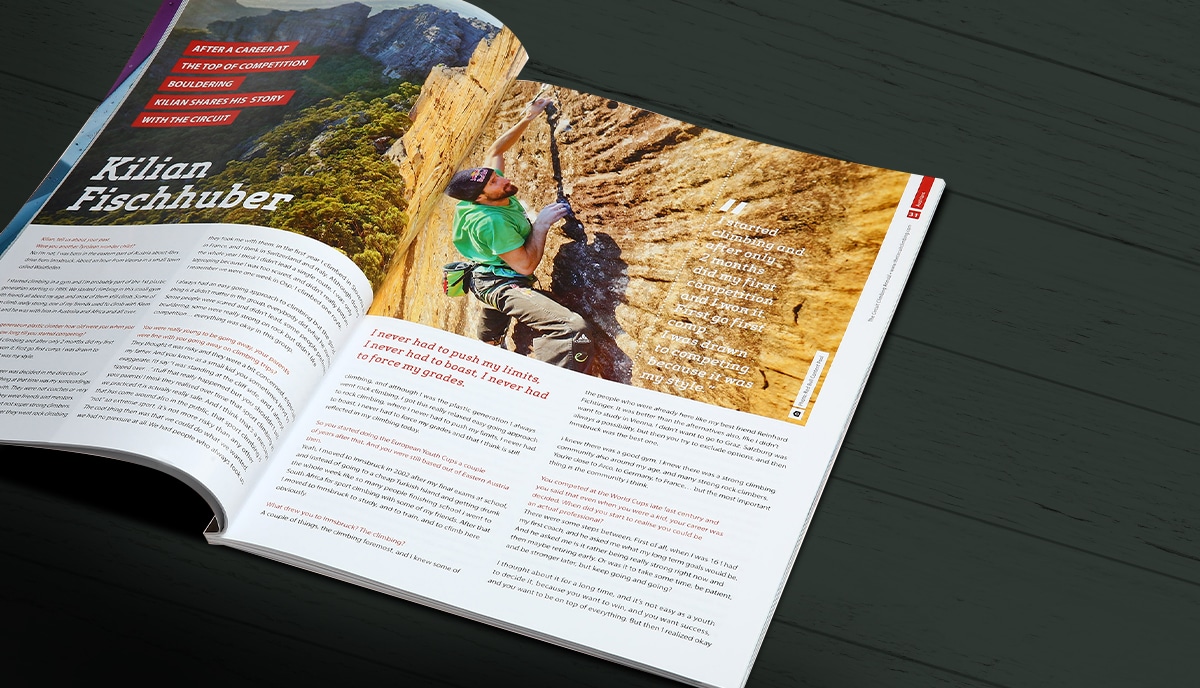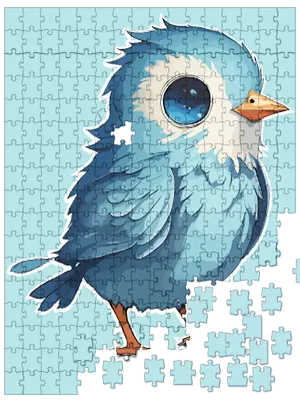Everything you need to know to get started printing a successful hobby magazine for pleasure and profit

In today's digital-dominated world, it may seem surprising that print magazines still hold a place in the hearts of millions of readers. However, there's something uniquely satisfying about flipping through the glossy pages of a well-designed magazine, especially one that focuses on your personal interests or hobbies. In this comprehensive guide, we'll walk you through the steps to transform your hobby into a successful print magazine, covering everything from defining your target audience to reaching them through effective sales and distribution strategies.
1. Identify your niche and target audience
One of the most important aspects of starting a successful print magazine is finding your niche and defining your target audience. As you're aiming to create a publication around your hobby, you're already one step ahead of the game. But you'll still need to think about how focused you want to be.
- Do you want to embrace every aspect of your hobby or narrow in on a single strand?
- Is there a professional side or only an amateur one?
- Do you want to use your magazine as a vehicle to attract and reach out to others and draw them in to help your hobby grow?
- Will your magazine have a local, state-wide, national, or international scope?
- Will you directly employ writers, photographers, and others in-house to develop your content? Will content be user-generated, or will you apply a mixed model?
Giving a lot of thought to these questions and others not only helps you create content that resonates with your readers but also allows you to position your magazine as a must-read resource for enthusiasts in your particular field, while also informing your ongoing content creation strategy and editorial policies.
Define your target audience
Once you have defined your niche and the scope and range of what aspects of your hobby you want your magazine to cover, it's essential to understand who your magazine's target audience is, what resources are already available to them on and offline, if there are other magazines they could choose, and how and why your publication will be different and offer them value they can't find elsewhere.
When thinking about who your target audience is, dive deep and make your research as granular as possible. Consider factors such as age, gender, geographical location, family, social, and economic status, and their other interests. Much of this you may already know from your own participation in clubs and societies related to your hobby, but some hobby activities are solitary in nature and in that case you'll need to do a bit of research to find out about other people who share your passion. Gather, collate, and use this information to create a reader profile. This will help you tailor your content, tone of voice, and marketing strategies to appeal to the people most likely to become loyal readers of your magazine.
Find your passion
Your hobby is likely something you're deeply passionate and knowledgeable about, so use this enthusiasm as the foundation for your magazine. By focusing on a topic you genuinely care about and have experience in, you'll be able to create an authentic and engaging publication that captivates your target audience. Designing your magazine around ideas, perspectives, and information that draw on your unique personal experience is a great starting point for developing a publication which has something special to offer your audience even if there are pre-existing resources, forums, and other magazines, that already touch on at least part of your hobby.
2. Research the market and competition
Before diving headfirst into magazine production—which involves a lot of work and some financial investment—it's crucial to research the existing market and identify any potential competition. This will help you determine whether there's a gap in the market for your magazine or if you'll be competing with publications so well-established and well-funded that you may not have the chance to capture your market. But just because other magazines exist doesn't mean that there's no room for you. You need to investigate.
It may well be that most are very broad in scope, or so specialized that there are still all kinds of options on which yours can focus. If you find several markets in your field, that can be a good sign as it means there's an audience already out there. Your job is to create a unique offering not yet covered by the others.
And if you can do that, then they cease to be your competition and become potential collaborators. You can run advertisements in each other's magazines, write guest content and interviews for each other, feature articles, and more. Sharing the market is often a valuable strategy that brings benefits to everyone involved.
Analyze similar magazines
Take the time to study magazines that cover similar topics or cater to the same audience as your own. This will give you an idea of the content, design, and advertising strategies that work, as well as potential areas where you can differentiate your publication to stand out from the competition. When doing an analysis, focus your attention on the following seven key factors:
- How many articles and features are there in each issue? Are some regular slots written always by the same writer? Is the magazine open to freelance or reader contributions? Aside from the core content, what other content do they publish, such as quizzes, puzzles, history of the hobby, interviews, or humorous pieces?
- How long are the articles and features? Do they do deep dives over several pages or shorter pieces? Is there a mix? What's the ratio of text to imagery, photos, and artwork?
- Is there an interactive space within the magazine, such as a “Letters to the Editor” page or a competition for funny stories or top tips?
- How many pages are there in each issue? Are the issues “straight” or do they include pullouts, inserts, posters, and calendars as giveaways?
- How often is the magazine published? Weekly, monthly, quarterly, bi-annually?
- Is the magazine available at newsstands or is it by subscription only? Is there an online version and a print edition and if so, is the content the same or different?
- Pay special attention to the adverts and promotions. What do they tell you about the kinds of business partnerships the magazine has made? Can you get an idea of the income and education of the readers from the kinds of products advertised and the price point of goods, services, and subscriptions on offer?
If you discover that there are several potential “competitors” (which you might also turn into collaborators, remember), it's a good idea to draw up charts and compare the results so you can better identify any common points and gaps in the market. Likewise, if there are readers' letters or Q&As, be sure to read them carefully to understand better what people want to know or learn and think about how your magazine might provide that valuable content to satisfy the need.
Assess demand and market saturation
While it's great to have a unique idea for a print magazine, it's also important to make sure there's sufficient demand for your niche. Conduct market research to determine the size of your potential audience and whether there's room for another publication in the space. This may involve analyzing circulation numbers, subscription rates, and advertising revenue for existing magazines in your niche.
You can do a certain amount of this research online by searching for magazine titles related to your hobby, by checking the shelves of your newsstand, contacting clubs and societies related to your hobby, and by checking the lists of major local, national, and international magazine publishers. But if you have the budget available, it may be worthwhile to engage the services of a market research service and pay them to conduct surveys and other assessments on your behalf.
It's good if there is some demand already in the marketplace. Getting a magazine off the ground when there's nothing even remotely similar out there is a challenge to make even the most daring publisher think again. But if your research shows that there's an unmet demand—for example, several lively online communities in which a common lament is the absence of a print magazine that caters for their needs—that is an excellent discovery. However, thinking that you'll be able to generate an audience from nothing is most likely an unrealistic expectation.

3. The advantages of offset printing
Although digital magazines have become increasingly popular in recent years, there are still several advantages to choosing print over digital for your hobby magazine and using an offset printer to produce your issues. Let's examine a few of the most important;
- Most hobby magazines have a strong visual, often photographic element—for example, in a detailed how-to feature—which requires the excellent reproduction you can get with offset print techniques.
- If you aim to print and distribute more than a handful of copies, you'll find offset printing more economical. Large-scale digital printing can be extremely expensive, whereas with offset, the more you print in one run, the lower the price per unit.
- Print magazines offer a tactile and immersive reading experience that digital publications simply can't replicate. The physicality of flipping through pages and the smell of ink and paper create a sensory connection that many readers find appealing.
- For hobby enthusiasts, print magazines often have a collectible value that digital versions lack. Readers may want to keep physical copies of their favorite issues for reference, display, or nostalgia.
- Print magazines are often perceived as more trustworthy and credible than their digital counterparts. This can be important for hobby magazines, where expert advice and accurate information are essential for building your brand's reputation.
With offset printing, you'll always get more control of the results, better quality paper and reproduction, more choice, and a better return on your investment.
4. Assemble your team
While much of the initial work may be done alone by you, creating a successful print magazine is a collaborative effort, and having the right team in place is often crucial. There's a lot to do and a broad range of specialized skills needed. This is especially true if you want to establish a long-term publication and increase your magazine's circulation. Here are some key roles you'll need to consider when assembling your magazine team:
Editor
This might be you, or you could delegate the responsibility to a knowledgeable and experienced professional. Your editor will oversee the magazine's content and ensure it aligns with your vision and target audience. They'll also work with writers and photographers to develop and refine articles, as well as manage deadlines and coordinate with your publishing manager.
Publishing manager
A publishing manager will handle the logistical aspects of producing and distributing your magazine. This includes working with printers, managing your budget, and overseeing the production schedule. They'll also handle the supply chain and manage distribution and subscriptions.
Sales and marketing manager
Your sales and marketing manager will generate advertising revenue and promote your magazine to potential readers. They'll reach out to advertisers, negotiate deals, and develop marketing campaigns to raise awareness of your publication.
Design and layout team
A skilled design and layout team will help create a visually appealing magazine that's easy to navigate and showcases your content effectively. This includes selecting fonts, colors, and imagery, as well as designing advertisements and other promotional materials.
Content creators
You can't have a magazine without content. Your content creators will be writers, experts, and photographers. You can establish a salaried in-house team, outsource the work to reputable freelancers, offer opportunities for reader-generated content, or use a combined model.
5. Develop a content strategy
Whoever will create your content, a strong content strategy is the backbone of any successful magazine. This combines an operational structure, an editorial policy, a mission statement, writers' guidelines, and a style guide. Here are some factors to consider when developing your content plan:
- Consistency
Your magazine should have a consistent tone, style, and focus across all issues. This not only helps build brand recognition, but also creates a sense of familiarity and trust with your readers.
- Quality
High-quality, well-researched, and engaging content is essential for attracting and keeping readers. Invest in experienced writers and photographers who can produce the level of content your audience expects.
- Variety
While it's important to stay true to your niche, offering a diverse range of content within your chosen topic will keep your readers interested and encourage them to explore additional aspects of their hobby.
- Relevance
Ensure your content is timely and relevant to your target audience. This may involve covering current trends, events, or news within your hobby, as well as providing practical tips, advice, and inspiration.
- Fact checking and expertise
Any stated facts in your content will need to be checked for accuracy and verified before publication. At least one expert, and possibly a panel of experts, should be available to make sure that all content is accurate, and correctly attributed. You should also engage a lawyer to deal with any legal issue over rights and content which may arise.
Time spent planning your content calendar is always time well spent, too. Remember to consider any seasonal events or special days which apply to your hobby and interests that you can create valuable content around. Anniversaries of famous people related to your hobby are also excellent sources of material. You'll also need to decide on the frequency and regularity of publication and develop a workflow to make sure that content is researched, created, delivered, checked, and prepared for printing and publication in a timely fashion.

6. Advertising and monetization
Even if you have initial capital to invest in your magazine or you run a successful crowdfunding campaign, advertising revenue is a key source of ongoing income for print magazines, so it's essential to develop a strategy for attracting and keeping advertisers. Fortunately, most hobbies need special materials, tools, clothing, and other resources which make it easier to develop mutually beneficial relationships with businesses, manufacturers, and service providers related to your niche. Here are some tips for generating ad revenue for your hobby magazine:
- Create a media kit
A media kit is a promotional tool that provides potential advertisers with information about your magazine, including circulation numbers, target audience demographics, ad space sizes, placements, and rates. This helps advertisers determine if your publication is a good fit for their target market and budget.
- Offer competitive rates
Pricing your ad space competitively will help attract advertisers and make your magazine an appealing option. Consider offering discounts for multiple ad placements or long-term commitments to encourage repeat business.
- Build relationships with advertisers
Developing strong relationships with advertisers is crucial for maintaining a steady stream of ad revenue. Keep in touch with current and potential advertisers, providing regular updates on your magazine's performance and offering personalized solutions to help them reach their marketing goals.
Advertising revenue, while central to your magazine's ongoing financial health, should still only be one income stream. Others will include direct sales of the magazine itself, annual subscriptions, and other goods and services you can sell to your subscribers via your newsletter and email list.
7. Magazine sales and distribution
Once you have the foundational infrastructure of your magazine's editorial strategy, content creation calendar and workflow, and printing worked out and in place, you'll need to sell copies. Having a solid sales and distribution strategy is key to getting your print magazine into the hands of your target audience, developing circulation numbers to attract more advertisers, and growing your subscriptions to the newsletter and email list. Let's look at several of the techniques we've seen work well. These are all good tips for maximizing your reach:
- Retail distribution
Partner with bookstores, newsstands, and specialty retailers to stock your magazine. This not only increases visibility, but also helps establish your publication as a credible and professional product.
- Subscription model
Offering a subscription model can help you build a loyal readership and generate recurring revenue. Encourage readers to subscribe by offering incentives, such as discounted rates or exclusive content.
- Online sales
Selling your print magazine through an online store can help you reach a wider audience and tap into the growing trend of eCommerce. Make sure your website is user-friendly and optimized for search engines to increase visibility.
- Events and trade shows
Attend events and trade shows related to your hobby to showcase your magazine and connect with potential readers and advertisers. This can also provide valuable networking opportunities and help you stay informed about industry trends.
8. Promote your magazine
Effective promotion is essential for raising awareness of your magazine and attracting new readers. You might do most of your promotion online focusing on social media and advertising, and through a lively, informative blog linked to your magazine's website to draw traffic and drive awareness of your publication. Likewise, you can advertise your magazine in other publications related to your hobby, run press releases, donate copies to schools and libraries, and leave flyers, cards, and other print promotions in places where your target readership can find them. Here's a quick summary of strategies for promoting your publication:
- Social media
Use social media platforms like Facebook, Instagram, and Twitter to share content from your magazine, engage with your audience, and build a community around your brand.
- Public relations
Pitch your magazine to local and niche publications, as well as relevant influencers and bloggers, to generate buzz and increase visibility.
- Collaborate with industry partners
Partner with businesses, organizations, and influencers within your hobby to cross-promote your magazine and expand your reach.
- Offer free samples
Distribute free copies of your magazine at events, retailers, and other relevant locations to pique interest and encourage potential readers to subscribe.
You may think of other innovative strategies for promoting your magazine, but these are proven methods to get you started. It's important to remember that many promotional techniques need to build momentum over time, so don't always expect immediate results. Ultimately, the best form of promotion is word-of-mouth, which is based on your magazine's reputation. And to build a solid reputation within your interest community always takes time.
9. Monitor and adjust
As with any business venture, it's important to evaluate your magazine's performance regularly and make necessary adjustments to ensure continued success. This may involve tweaking your content strategy, refining your marketing efforts, or exploring new distribution channels. Running surveys and questionnaires among your readers is another good way to get valuable insights and data about what stories your readers like best and what content was less important to them. Creating a successful hobby magazine is a journey. Don't expect to get everything first time. But if you have a built in mechanism for monitoring and evaluating your actions, you can create more of what works and cut out what doesn't in a responsive and positive ongoing improvement program.
10. Embrace the journey and enjoy the ride!
Starting a successful print magazine for your hobby is a rewarding and challenging endeavor. Embrace the journey, learn from your experiences, and continually strive to improve your publication. With dedication, hard work, and a passion for your niche, your print magazine can become a cherished resource for your audience and a successful business venture.
As we've seen, launching a successful print magazine for your hobby involves careful planning, market research, assembling a strong team, creating engaging content, and implementing effective sales and distribution strategies. By following the steps outlined in this guide and embracing the unique advantages of print publications, you can build a thriving magazine that captivates readers and celebrates your passion.
Let's talk!
At QinPrinting, we've been helping enthusiasts and creatives just like you to develop and print successful magazines for over 25 years. Our list of repeat-buying clients — many of whom have held active accounts with us for over a decade — is testimony to the effectiveness of our high-quality print products and the quality of our customer service. Get in touch today to discuss your print magazine needs and request a competitive, no-obligation quote. We can't wait to contribute to your hobby magazine's success. Let's talk!










